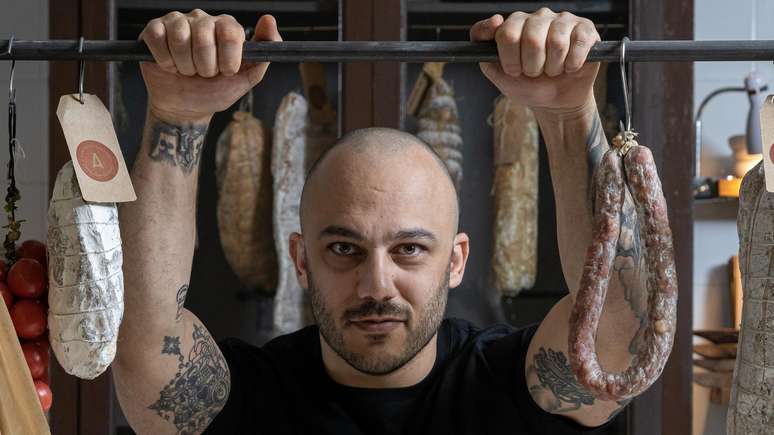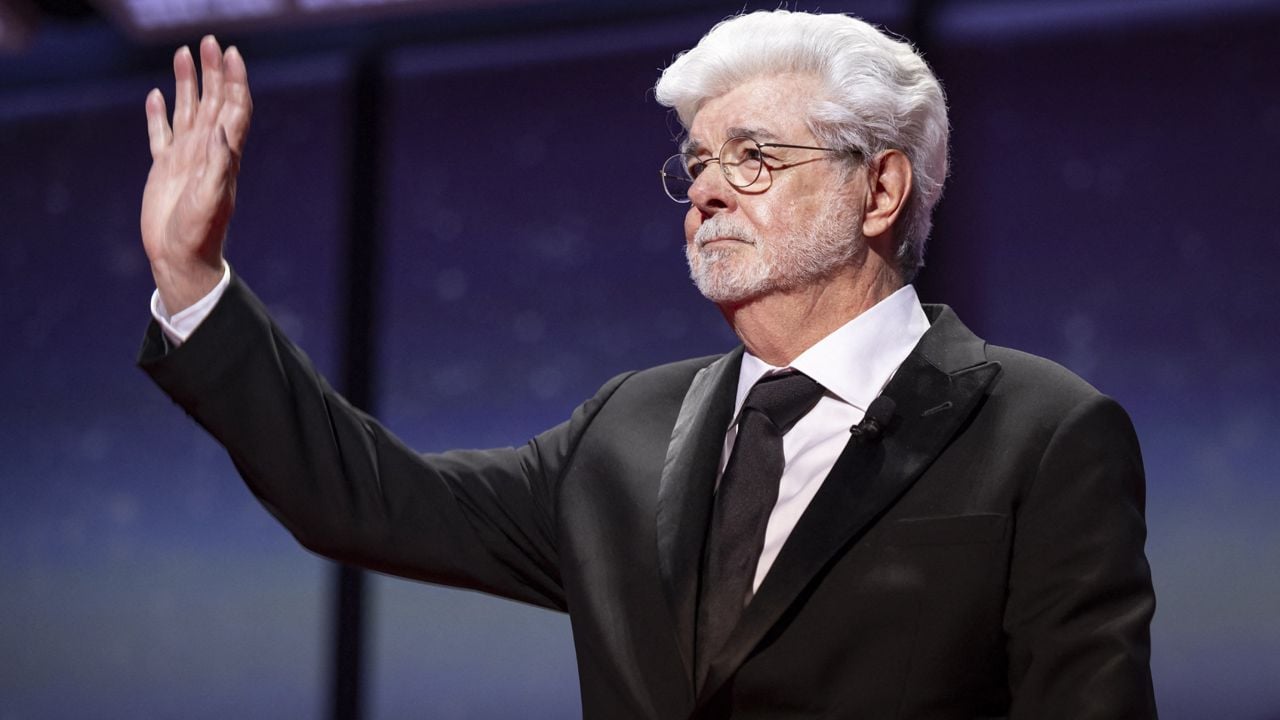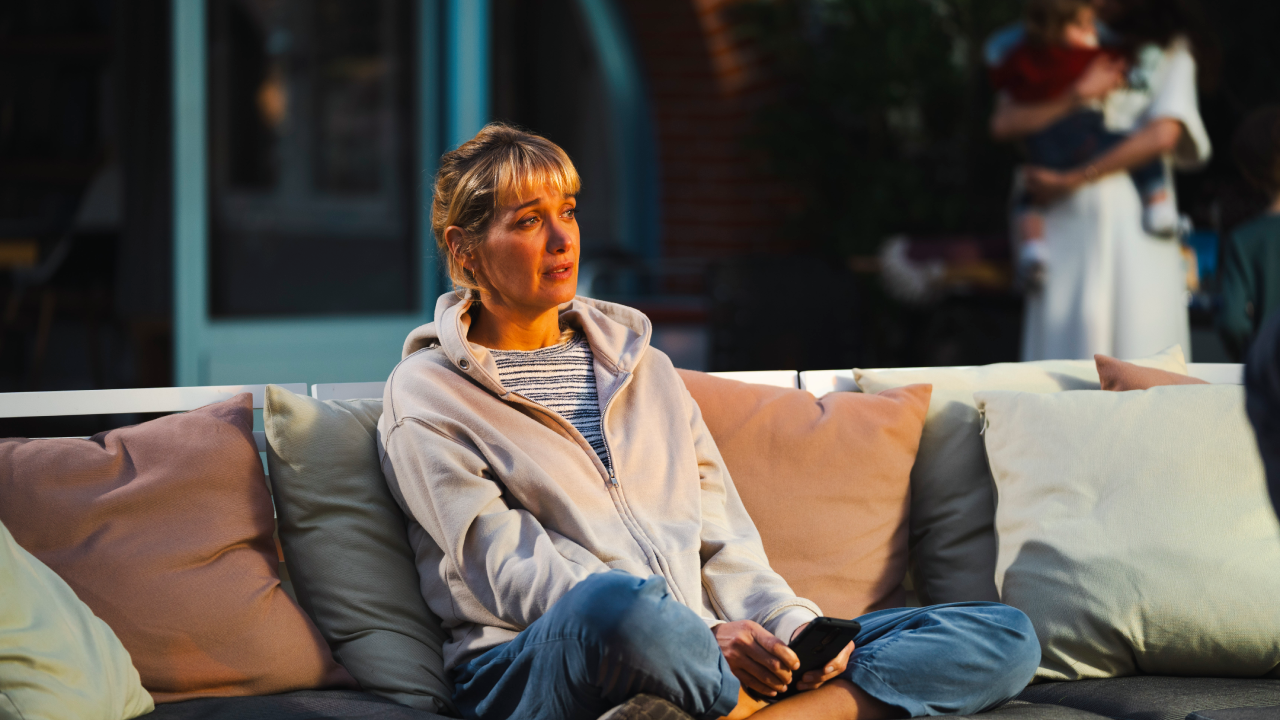Rafael Panatieri recounts his journey from Rio Pardo, in Rio Grande do Sul, to Barcelona, where he opened an award-winning pizzeria.
html[data-range=”xlarge”] figure image img.img-4cf37df5bb97dd822544ea631a00d928v5hobdps { width: 774px; height: 435px; }HTML[data-range=”large”] figure image img.img-4cf37df5bb97dd822544ea631a00d928v5hobdps { width: 548px; height: 308px; }HTML[data-range=”small”] figure image img.img-4cf37df5bb97dd822544ea631a00d928v5hobdps, html[data-range=”medium”] figure image img.img-4cf37df5bb97dd822544ea631a00d928v5hobdps { width: 564px; height: 317px; }
Born in the small town of Rio Pardo in Rio Grande do Sul, gaucho Rafael Panatieri decided he would make a great cook at the age of 17. But, at the time, I could not imagine that 20 years later I would be at the forefront of Europe’s best pizzeria outside of Italy.
Today he is a partner of Sartoria Panatieri, in Barcelona, Spain, which ranked first in the renowned Italian guide 50 Top Pizza 2023.
Opened in 2018, this artisan pizzeria with a sustainable philosophy already has two locations in the Spanish city and is the result of a gastronomic journey that began when Rafael Panatieri was still a boy, in Rio Pardo.
Coming from a family of Italian origin, he says he came into contact with Mediterranean ingredients and preparations from an early age. It was his grandmother, known for bringing the family together for big dinners, who reawakened his passion for cooking.
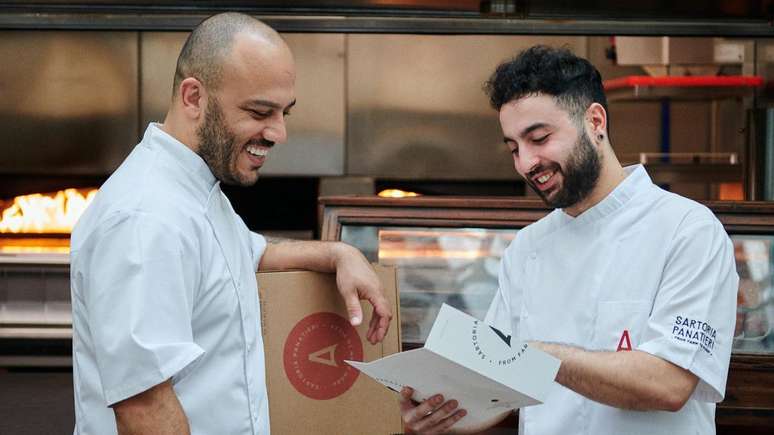
Before deciding to become a chef, Rafael even passed an entrance exam to study veterinary medicine. He recalls that, at the time, being a cook didn’t have the recognition he has today. But, even in the face of uncertainty, he was lucky to have the support of his family to make his dream come true.
“The only chef I had as a reference in Brazil was Alex [Atala]but at the time the profession was not very popular,” he tells BBC News Brasil.
After taking a cooking class at Senac in Rio Grande do Sul, Panatieri was sure that this would be his career. He then continued his studies at the European Center of Curitiba and worked in some of the best hotel restaurants in Gramado.
He was 22 when he decided to leave the country, and since he already had Italian documents, he landed first in Milan. Having overcome the country’s bureaucracy, already with the red (European) passport in hand, he concentrated on conquering his space in European kitchens.
“I knew I had to work twice as hard not to be at home, and to learn the language quickly. I think my more ‘serious’ character helped me gain respect everywhere”, says the chef.
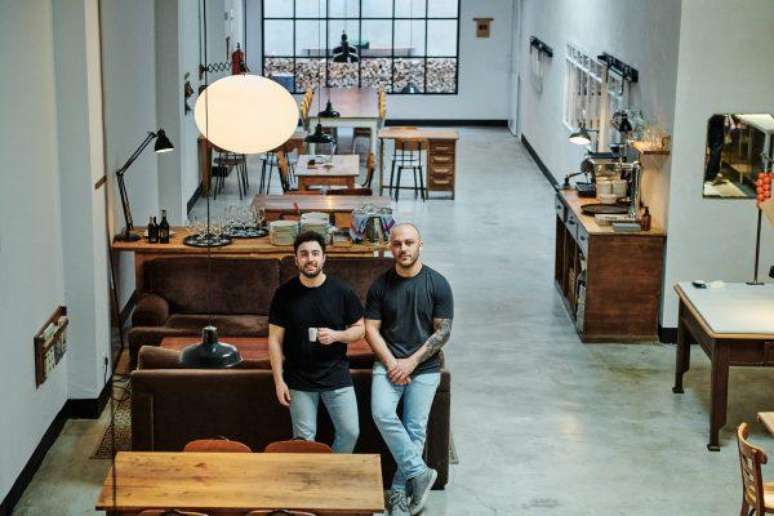
Panatieri’s wife Ana Carolina moved to Europe six months later. She was a pharmacist, she had never worked in the hotel industry, but she found work as a waitress in Italy. You spent nearly four years in the countryside, during which time the chef worked in restaurants in Sicily, Rome and Florence.
During an end-of-year trip, the couple fell in love with the city of Barcelona. They packed up, or rather the two backpacks they had, and moved there. According to him, the cosmopolitan atmosphere of the Spanish city is more open to foreigners and the cuisine is freer for innovations.
“I really like Italian cuisine for its basis, for tradition and for the affection they have for food, but at the time, at the age of 25, I wanted to have that vision of creative cuisine in Spain.”
The greatest representative of this movement at the time was chef Ferran Adrià, and molecular gastronomy developed at the El Bulli restaurant. Panatieri says he has sent several emails to get an internship with the chef, but without success.
“When Ferran Adrià closed El Bulli [em 2011], we were already starting to talk about the Roca brothers. So my focus shifted to working with them,” he says.
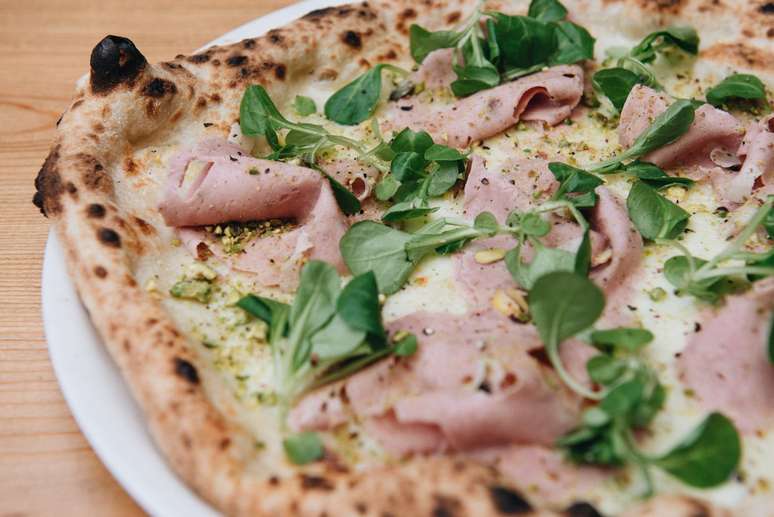
Creators of the three-star Celler de Can Roca restaurant, brothers Joan, Josep and Jordi have welcomed Rafael as part of the family. During the six years he worked with the Rocas, the Brazilian went from intern to chef at the Roca Moo restaurant.
“Representing a starred restaurant is the dream of many, that’s why my need was daily. What doesn’t matter to anyone is that getting on the podium is more difficult than reaching it”.
It was among the pans of Roca Moo that Panatieri met the Spaniard Jorge Sastre, his current partner in the pizzeria, in 2016. The madrileño was yours sous chef (underboss) – and the two had a harmony that needed no words.
In 2018 they opened the first Sartoria Panatieri unit, a small door, at number 51, in the charming neighborhood of Gràcia. A cozy space with a wood-burning oven and garden that would come to be known as the best pizzeria in Europe.
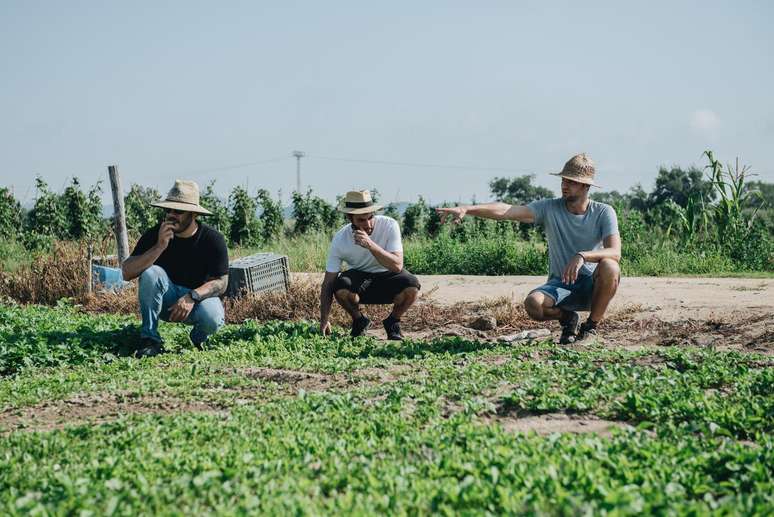
“I’ve always dreamed of opening a pizzeria, but my experiences in starred restaurants led me on a different path,” says the Brazilian partner.
The award-winning establishment is distinguished by a philosophy of respect for local ingredients and sustainable practices.
“The idea has always been to create with local ingredients. Italian products are excellent, but we decided to look carefully at what surrounds us,” says Panatieri.

In 2021, the partners opened the second unit, this time in the lively Eixample district. Customers have tripled, but Panatieri and Sastre have decided to continue adopting the same artisanal and sustainable philosophy.
Reaching the Olympus of the Italian guide 50 Top Pizza 2023 is the result of a work that goes far beyond doughs and fillings. The guide’s rigorous criteria also evaluate the restaurant’s proposition, ambiance and customer experience. Second place went to the Bæst pizzeria in Copenhagen; and the third, with 50 Kalò, by chef Ciro Salvo, in London.
“We thought we were in the top three, but being recognized as the best pizzeria in Europe outside of Italy came as a big surprise,” says Panatieri.
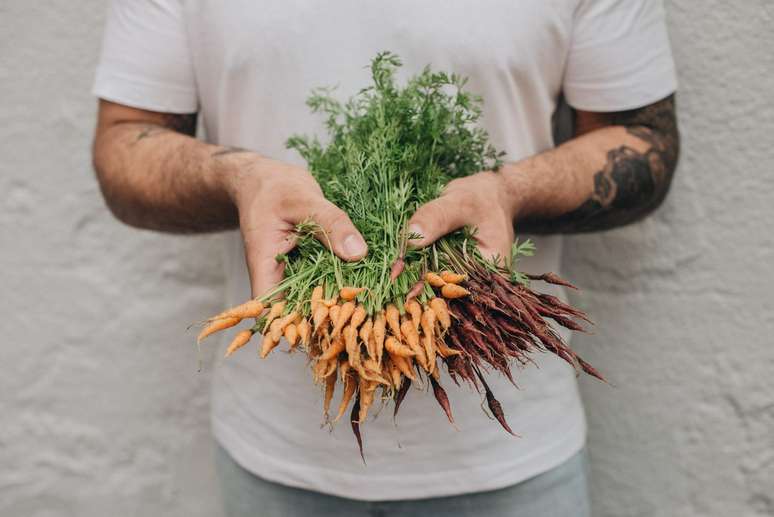
He says that before Sartoria he had never made pizzas, except the ones he tried at home. But going through renowned kitchens helped him speed up this process. Together, the partners studied different preparations and, after several trials and errors, they found the perfect formula.
“I wanted our pizza to be a complete dish, but with dough instead of porcelain,” he reveals.
The concept “from farm to pizza” (from farm to pizza), created by Sartoria Panatieri, enhances the value of ingredients and also of local producers. According to the partners, the secret of Sartoria’s success is not in the wood-fired oven — but in the surrounding rural areas is the city of Barcelona.
“This philosophy means everything to us. It is the proximity to the producers that leads us to obtain the best ingredients, at the best time of year”, Panatieri reveals.
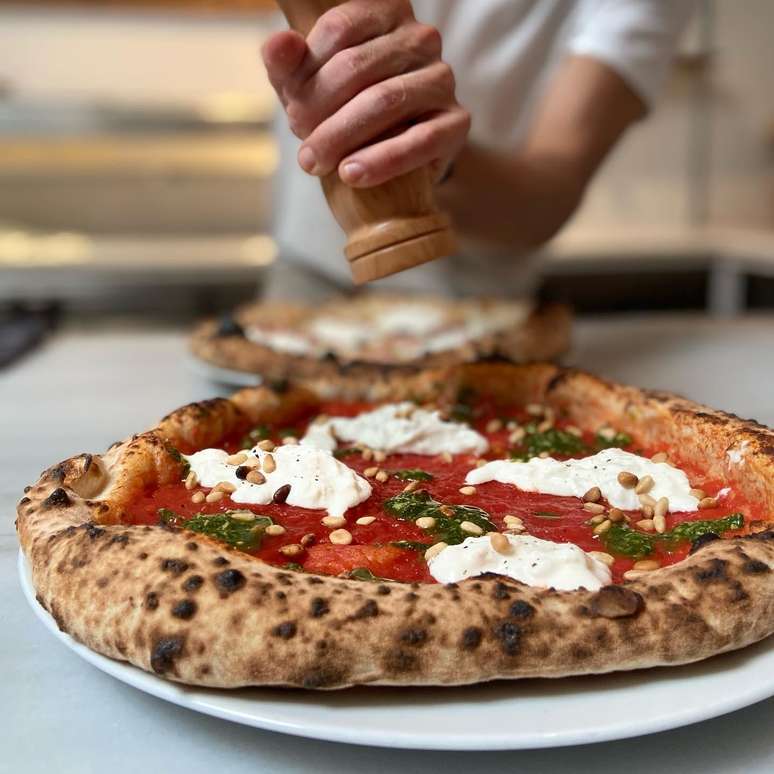
One example is the artisanal sausages from the Dpagès ecological farm, in Lleida, Catalonia. For the production of mortadella, fuet and sobrasada, Gascon pigs are used, an Iberian breed in danger of extinction that the company is working to recover.
The pizza dough is made with ecological flours — fermented for more than 70 hours.
“The wheat we use comes from the stone mills of the Cal Pauet farm in Solsona. It’s more expensive than industrial wheat, but it’s the one that fits best with our dough,” he says.
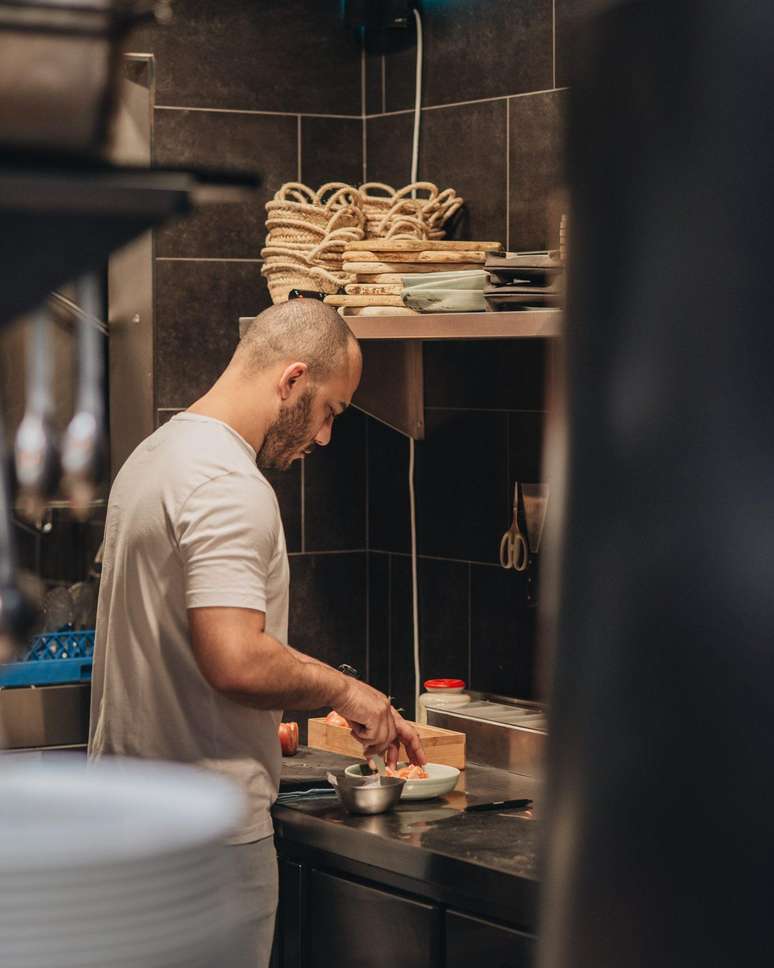
Revisiting a classic: the best pizza of the year 2023
The pizza with roasted cherry tomato sauce, mozzarella and hollandaise sauce with basil was elected, also by the Italian guide, the best pizza of the year 2023.
“When it comes to pizza, the Margherita is the first thing that comes to mind. My idea was to make it in a different way, but without disrespecting it”, explains Panatieri.
According to the chef, one of the challenges of using only local ingredients has been to replace the traditional Italian San Marzano tomato, grown between Naples and Salerno.
As a solution, Rafael saved one of the strongest memories he has of Brazil: his mother and grandmother turn tomatoes from the Rio Pardo region into delicious sauces.
To achieve the expected balance between acidity and sweetness, the chef then developed a recipe with local cherry tomatoes roasted in a wood oven and, to conclude the reinterpretation, replaced the fresh basil with a hollandaise sauce with aromatic leaves.
Source: Terra
Ben Stock is a lifestyle journalist and author at Gossipify. He writes about topics such as health, wellness, travel, food and home decor. He provides practical advice and inspiration to improve well-being, keeps readers up to date with latest lifestyle news and trends, known for his engaging writing style, in-depth analysis and unique perspectives.

